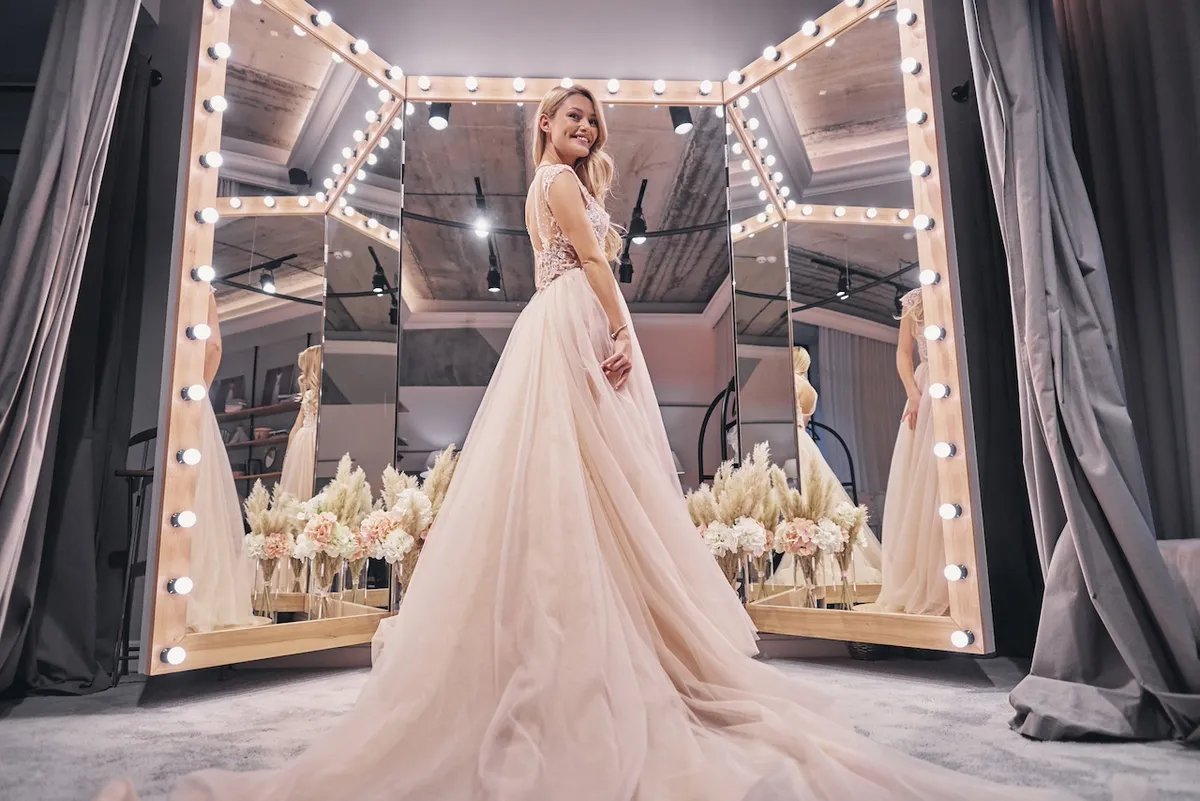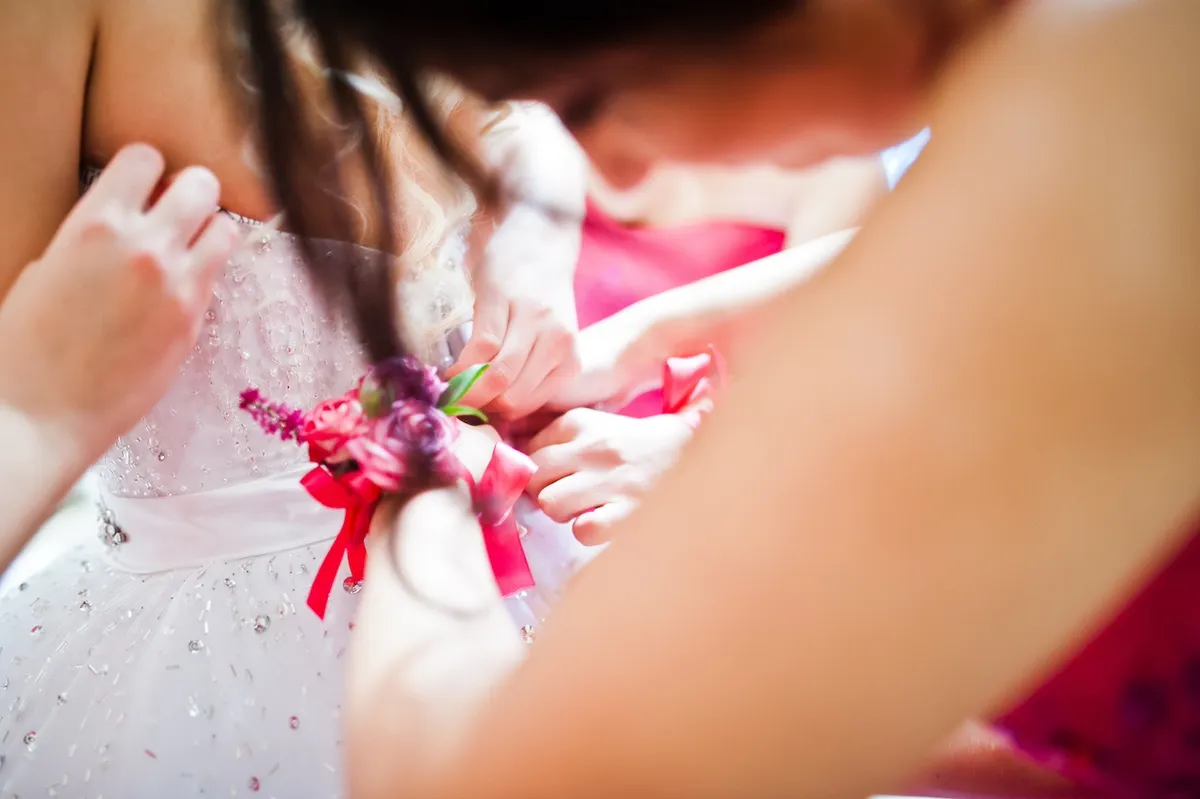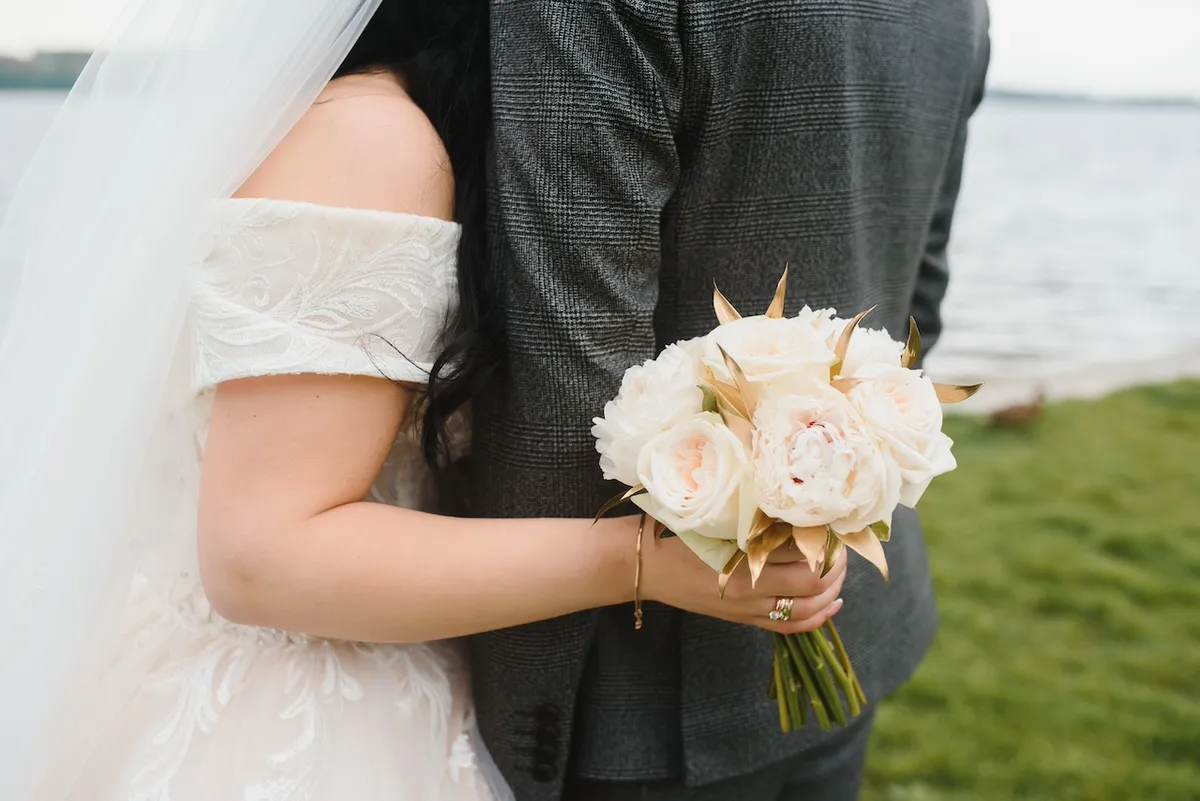
Choosing the perfect wedding dress can be a dazzling challenge for brides across the globe. Every culture celebrates bridal attire in its own beautiful and unique way. This post explores both traditional and modern wedding styles worldwide, from vibrant hues to sleek designs, offering inspiration for your special day.
Discover the dress that speaks to you!
Traditional Wedding Dresses Around the World
Across different cultures, traditional wedding dresses hold deep cultural significance. From the intricate embroidery of Chinese qipaos to the vibrant colors and patterns of Nigerian attire, each dress tells a unique story of heritage and tradition.
China
In China, brides often wear a dress called the qipao or cheongsam. This traditional bridal wear is a long gown with high neck and slit sides. It comes in bright red, which stands for luck and happiness in Chinese culture.
The dress may have golden phoenixes and dragons on it. These are symbols of good fortune.
Many modern Chinese wedding dresses mix old styles with new trends. Some brides choose white gowns like those popular in Western culture but keep Chinese elements. They might add embroidery or use red accessories to honor their heritage.
Others stick to classic designs but play with different materials and cuts to make them feel fresh.
Morocco
In Morocco, traditional wedding dresses showcase intricate designs and vibrant colors. The bride often wears a kaftan, a long robe with elaborate embroidery and embellishments. These kaftans come in rich hues like red, gold, or green, reflecting the country's culture and traditions.
Additionally, brides may adorn themselves with stunning jewelry pieces such as headpieces and earrings to complete their bridal look, adding an extra touch of elegance and beauty to their attire.
The modern bridal fashion scene in Morocco has seen an incorporation of contemporary elements while still holding onto traditional influences. Modern Moroccan brides often opt for elegant white gowns inspired by Western styles but infused with local elements like embroidery or beadwork reminiscent of traditional designs.
Vietnam
Vietnam's traditional wedding attire reflects the country's rich cultural heritage. The áo dài, a long tunic with long pants, is a symbol of elegance and grace for Vietnamese brides.
Typically in vibrant colors like red or pink, it represents luck and happiness. Modern influences have seen contemporary variations of the áo dài, incorporating intricate embroidery and different neckline styles to merge tradition with modern fashion trends.
These dresses beautifully showcase Vietnam's unique bridal fashion sensibilities while embracing global influences.
India
In India, traditional wedding dresses vary greatly depending on the region and culture. Bridal attire often includes vibrant colors like red, symbolizing prosperity and fertility. For example, in North India, brides wear lehenga cholis or sarees with intricate embroidery and embellishments.
In South India, brides may opt for kanjeevaram silk saris in rich hues paired with heavy gold jewelry. Each garment holds deep cultural significance and is passed down through generations, showcasing the country's diverse bridal fashion heritage.
Modern Indian wedding dresses now blend traditional styles with contemporary elements to create unique and stunning ensembles that reflect the evolving global bridal fashion trends.
Nigeria
Nigeria boasts a rich tapestry of diverse cultures, each with its unique wedding traditions and dress styles. Traditional Nigerian wedding attire often includes the colorful and ornate "aso oke" fabric, paired with matching accessories like headpieces and coral beads.
The modern influence on Nigerian bridal fashion has seen an evolution towards incorporating contemporary designs while retaining the essence of cultural heritage, resulting in stunning and vibrant wedding gowns that beautifully blend tradition with a touch of modern flair.
The blending of traditional elements with more contemporary designs reflects the dynamic nature of Nigeria's bridal fashion scene, where brides have the freedom to express their individuality through distinctive wedding ensembles that honor their cultural roots yet embrace global influences.
Kenya
In Kenya, traditional wedding attire varies among different ethnic groups. The Kikuyu brides wear a beaded headdress and leather skirt, while Maasai brides adorn themselves in colorful fabric wrapped around their bodies and intricate beaded jewelry.
Some modern Kenyan brides opt for Western-style white gowns but often incorporate the country's traditional fabrics or beadwork into the design. The bridal fashion in Kenya reflects a blend of contemporary influences with deeply rooted cultural traditions, creating stunning and unique wedding dresses that showcase the country's rich heritage.
Kenya's diverse wedding attire captures the essence of cultural diversity and showcases the beauty of traditional elements blended with modern styles. This fusion creates a captivating array of bridal fashion that celebrates Kenya's vibrant heritage while embracing contemporary trends and influences from around the world.
Peru
Peru's traditional wedding attire reflects the country's rich cultural heritage. The bride often wears a handwoven woolen skirt and a vibrantly colored lliclla, or shoulder cloth. This ensemble is complemented by intricately embroidered blouses and decorative hats, showcasing the skilled craftsmanship of Peruvian artisans.
With influences from indigenous Quechua and Inca traditions, these garments hold significant cultural symbolism and are an integral part of Peru's vibrant wedding customs.
In modern Peruvian bridal fashion, there is a trend towards blending traditional elements with contemporary designs. Brides may opt for elegant white dresses while incorporating indigenous textiles or embroidery as a nod to their cultural roots.

Modern Wedding Dress Styles
Influences from other cultures and incorporating traditional elements have led to unique and unconventional modern wedding dress styles that reflect the diversity of bridal fashion around the world.
If you want to learn more about how global influences are shaping contemporary bridal wear, keep reading!
Influences from other cultures
Wedding dress styles around the world are often influenced by other cultures. Bridal fashion in one country can be inspired by the traditional attire of another, leading to a beautiful blend of different cultural elements.
For example, modern wedding dresses in Western countries may incorporate embroidery or beading techniques from Asian cultures, while also drawing inspiration from African fabrics and designs.
This cross-cultural exchange creates unique and stunning bridal gowns that celebrate diversity and heritage.
Furthermore, influences from other cultures can also lead to unconventional and non-traditional wedding dress styles. Designers may take cues from global fashion trends or integrate diverse cultural elements to create contemporary bridal looks that push boundaries and defy convention.
Incorporating traditional elements
Modern wedding dress styles often incorporate traditional elements to honor cultural heritage and add a unique touch. From incorporating symbolic colors to using traditional fabrics and embroidery techniques, modern brides are finding ways to infuse their heritage into contemporary gown designs.
The fusion of modern silhouettes with traditional elements creates stunning bridal looks that celebrate cultural diversity and create a meaningful connection to the past. Designers are also exploring innovative ways to blend old and new, resulting in wedding dresses that beautifully balance tradition and modernity while embracing global influences.
The incorporation of traditional elements in modern wedding dress styles reflects a growing appreciation for diverse cultural traditions in bridal fashion. Brides today seek dresses that not only showcase their individual style but also pay homage to their roots through carefully incorporated traditional details.
Unique and unconventional styles
In modern wedding fashion, brides are embracing unique and unconventional styles that break away from traditional norms. Designers are incorporating non-traditional elements such as bold colors, edgy silhouettes, and unexpected fabrics to create one-of-a-kind bridal looks.
From avant-garde designs influenced by art and architecture to minimalist yet striking ensembles, these unconventional styles are redefining the concept of a modern bride. Embracing individuality and personal expression, these daring wedding dresses celebrate cultural diversity in wedding attire while making a bold statement that resonates with contemporary brides seeking something truly unique.
Bridal Fashion Trends Across Cultures
Bridal fashion trends across cultures are influenced by the importance of color and symbolism, cultural significance and traditions, as well as evolving styles and influences. From traditional to contemporary wedding dresses, diverse bridal attire trends continue to shape the global wedding fashion landscape.
Importance of color and symbolism
The importance of color and symbolism in wedding dresses varies across different cultures. In many traditions, the color of the wedding attire holds significant meaning, representing blessings, prosperity, or cultural heritage.
For example, red symbolizes luck and joy in Chinese culture, while white is associated with purity and new beginnings in Western weddings. Symbolism also plays a crucial role as patterns and designs on the dress may hold hidden meanings or represent elements from nature or mythology that are deeply rooted in the culture's beliefs.
Cultural significance often dictates the choice of colors and symbols incorporated into wedding dresses. These elements not only reflect the couple's heritage but also serve as a way to honor their ancestors and bring good fortune to their marriage.
Cultural significance and traditions
Wedding dresses hold deep cultural significance and are often steeped in traditions that have been passed down through generations. In many cultures, the color of the wedding dress carries important symbolism, such as red for good luck in China or white for purity in Western cultures.
Additionally, traditional elements like intricate embroidery, beadwork, or symbolic motifs are often incorporated into the design to honor heritage and customs, making each dress a meaningful representation of cultural identity.
Furthermore, various rituals and customs surrounding the selection and wearing of wedding dresses reflect the values and beliefs of different cultures. From elaborate ceremonies to specific guidelines on attire, these traditions highlight the profound importance placed on weddings within communities around the world.
Evolving styles and influences
Modern wedding dress styles have evolved to embrace influences from various cultures, resulting in a fusion of traditional elements and contemporary flair. Bridal fashion trends now incorporate diverse cultural symbols, colors, and designs making wedding dresses unique and unconventional.
This shift reflects the globalized world we live in today, where brides can choose from a wide range of fashionable gowns that celebrate their heritage while embracing modernity.
Influences from other cultures impact bridal wear with refreshing aesthetics that challenge traditional norms. Designers are redefining wedding attire by infusing it with elements from different ethnic backgrounds, creating a beautiful blend of global inspiration for the modern bride.

Conclusion
In conclusion, wedding dresses from around the world showcase a rich tapestry of traditions and styles. The blend of traditional and modern elements in bridal fashion reflects the evolving cultural landscape.
Embracing diverse influences can lead to stunning and unique bridal looks that resonate with personal and cultural significance. Readers are encouraged to explore the beauty of global wedding attire and integrate elements that resonate with their own style, tradition, and heritage.
Take inspiration from these international designs to create a wedding ensemble that is truly unforgettable. Explore further resources to delve deeper into the captivating world of bridal fashion.
Get legally married online
In partnership with Courtly, get legally married online.
From start to “I do.” Courtly team is fully committed to the cause: getting you married. They've done more remote weddings than anyone. Thousands of couples have counted on Courtly and we know what it takes to secure your legal marriage certificate.
Also, enjoy an exclusive discount available only to the MarryOnChain community! Use code MARRYONCHAIN to get $75 off your wedding.
RelatedRelated articles
All posts




